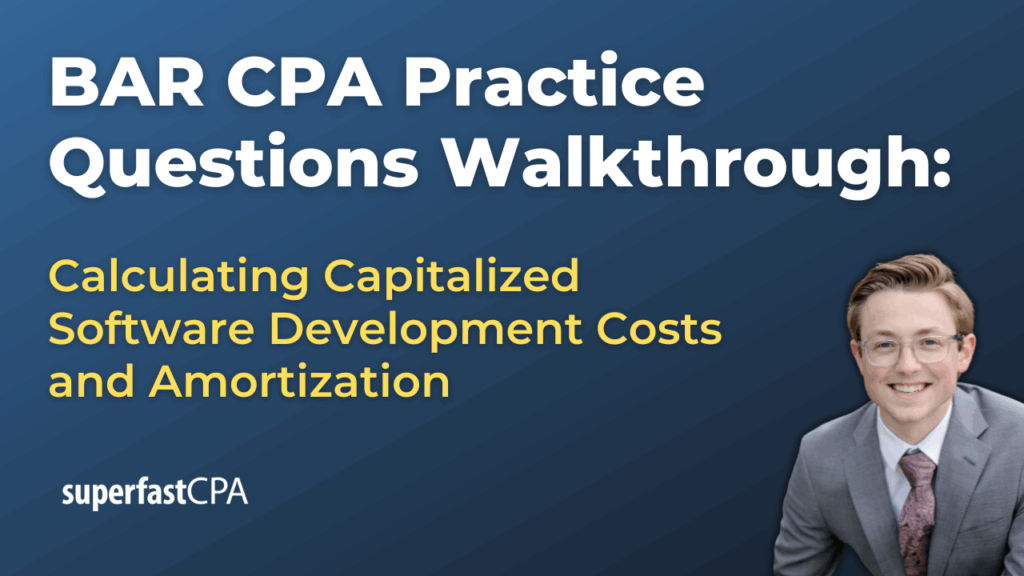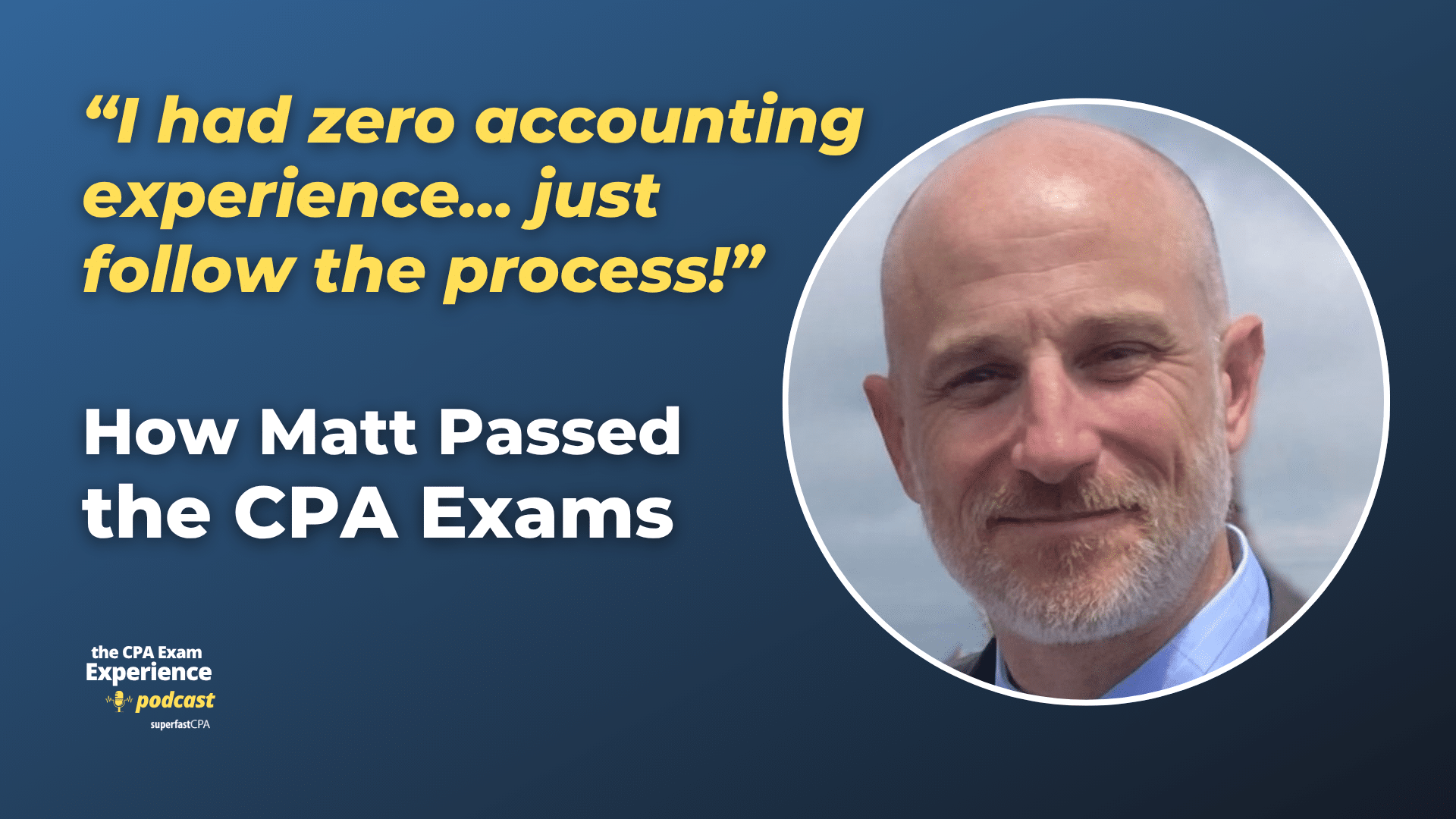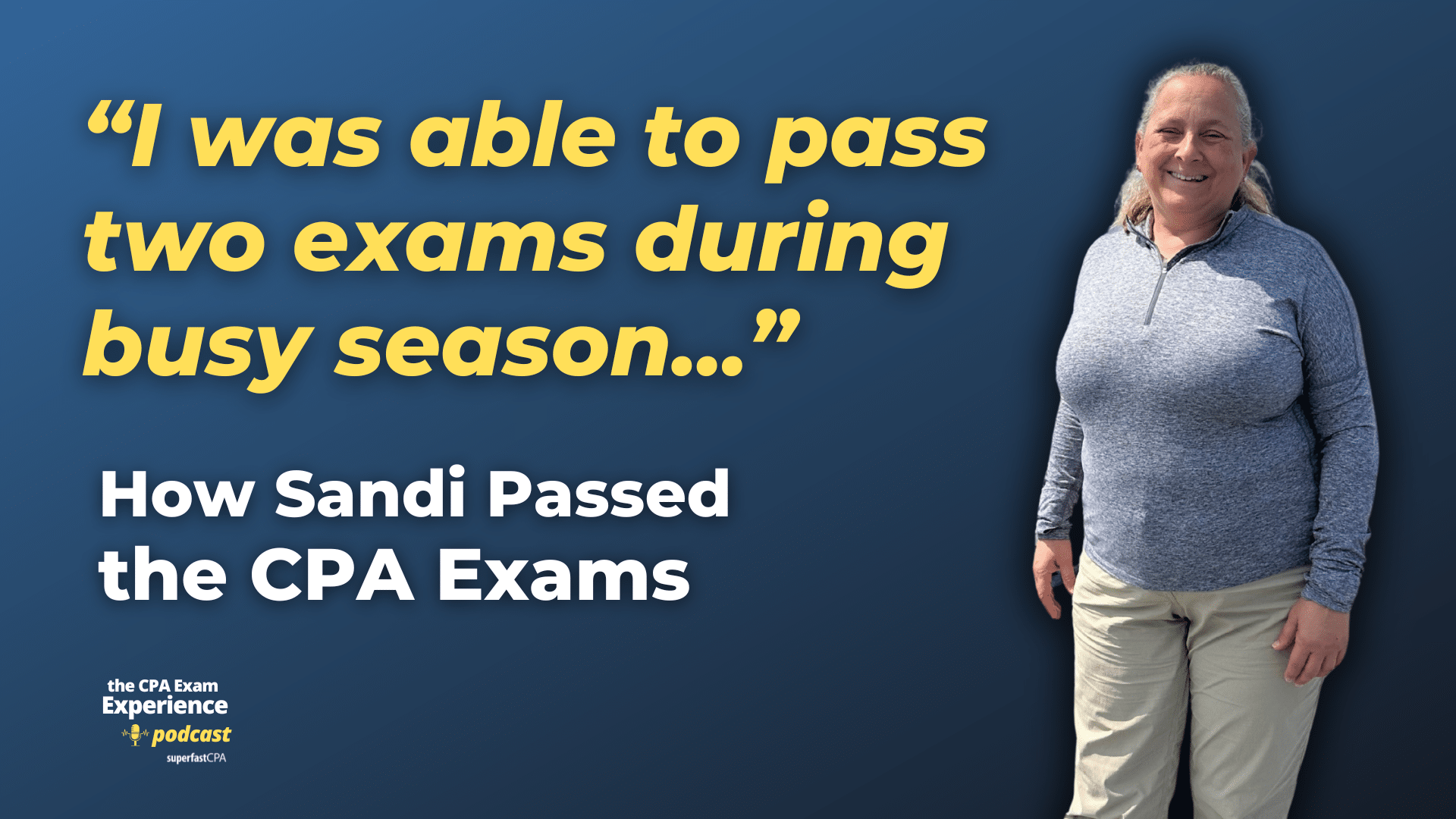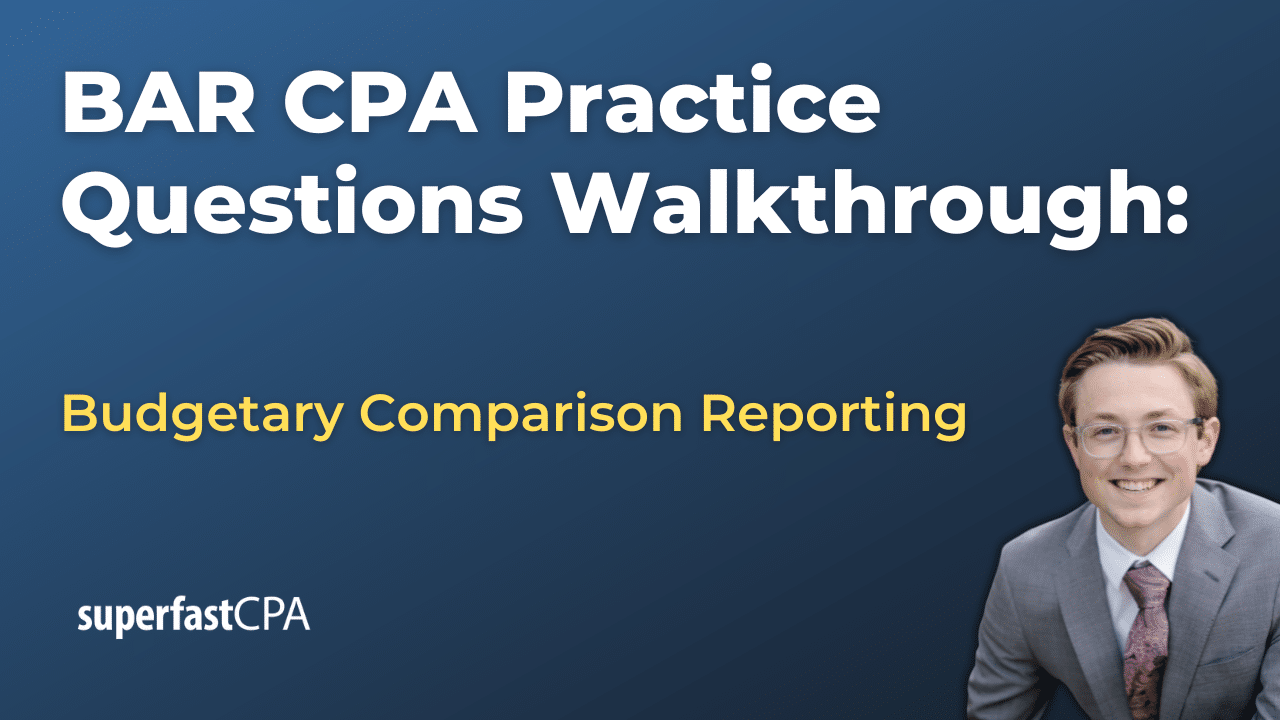In this video, we walk through 5 BAR practice questions teaching about calculating capitalized software development costs and amortization. These questions are from BAR content area 2 on the AICPA CPA exam blueprints: Technical Accounting and Reporting
The best way to use this video is to pause each time we get to a new question in the video, and then make your own attempt at the question before watching us go through it.
Also be sure to watch one of our free webinars on the 6 “key ingredients” to an extremely effective & efficient CPA study process here…
Calculating Capitalized Software Development Costs and Amortization
This post covers the essential concepts and calculations for capitalizing software developed for internal use or for sale, including how to determine related amortization expenses. These principles are directly aligned with the BAR section of the CPA exam blueprint.
Overview: What You’re Expected to Know
Candidates must be able to identify:
- Which software development costs are capitalized versus expensed
- The accounting differences between software developed for internal use and for sale
- How to calculate and recognize amortization of capitalized software
We’ll walk through examples, common traps, and key rules you need to master.
Software Developed for Internal Use
For internal-use software, ASC 350-40 applies. GAAP separates costs into three distinct project stages:
Stages and Accounting Treatment
- Preliminary Project Stage → Expensed
(Planning, research, feasibility studies) - Application Development Stage → Capitalized
(Coding, installation, testing, software configuration) - Post-Implementation Stage → Expensed
(Training, maintenance, data conversion)
Example:
Ridgepoint Corp. incurs the following:
- $40,000 on planning → expensed
- $75,000 on coding → capitalized
- $25,000 on testing → capitalized
- $12,000 on training → expensed
Total capitalized: $100,000
Total expensed: $52,000
Amortization begins once the software is ready for internal use.
Software Developed for Sale
For externally marketed software, ASC 985-20 governs the treatment of costs. The key threshold is technological feasibility.
Capitalization Window
- Before feasibility → Expensed
(Research, concept development) - After feasibility but before general release → Capitalized
(Coding, testing, packaging) - After release → Expensed
(Marketing, customer support, upgrades)
Technological feasibility typically means a detailed program design or a working prototype is complete.
Example:
NovaFrame Inc. reports:
- $45,000 in research → expensed
- $95,000 in coding post-feasibility → capitalized
- $40,000 in marketing → expensed
Total capitalized: $95,000
Total expensed: $85,000
Amortization of Capitalized Software for Sale
Once software is released for sale, amortization must begin. The amortization expense is calculated using the greater of:
- The straight-line method over the expected useful life
- The percentage-of-revenue method
Example:
Catalyst Systems capitalizes $600,000.
- Useful life: 4 years
- Estimated revenue: $1,000,000
- Year 1 revenue: $300,000
Calculations:
- Straight-line: $600,000 ÷ 4 = $150,000
- Percentage-of-revenue: ($300,000 ÷ $1,000,000) × $600,000 = $180,000
Amortization expense for Year 1 = $180,000 (higher of the two)
No Amortization Until General Release
If the software isn’t available for sale yet, no amortization is recorded—even if capitalizable work has been done.
Example:
BlueArc Systems incurs:
- $90,000 pre-feasibility → expensed
- $240,000 post-feasibility → capitalized
- $50,000 on marketing → expensed
Because the software isn’t released until next year, there is no amortization yet.
Total expense for the year = $140,000 (pre-feasibility + marketing)
Watch Out for Expense Distractions
Some CPA questions include unrelated expenses—like support or overhead—that may confuse test-takers.
Focus only on what the question is asking: amortization expense or total expense?
Example:
HaloWave Inc. capitalizes $600,000 and expects $1,500,000 in revenue.
- Year 1 revenue: $600,000
- Support/overhead expenses: $240,000
Amortization methods:
- Straight-line: $150,000
- Percentage-of-revenue: ($600,000 ÷ $1,500,000) × $600,000 = $240,000
Amortization expense = $240,000
Support expenses are not part of the amortization calculation.
Summary: Pillar Topics
Here are the most important facts you should retain:
1. Capitalization rules differ for internal-use and for-sale software
Internal-use software is capitalized during the application development stage; for-sale software is capitalized after technological feasibility and before release.
2. Pre-feasibility, training, data conversion, and marketing costs are always expensed
These costs are not capitalizable under GAAP, regardless of software purpose.
3. Amortization begins when the software is ready for release and uses the greater of two methods
Use the larger value between straight-line and percentage-of-revenue amortization methods.
4. Total software expense includes all non-capitalized development costs and any recognized amortization
Carefully match costs to the correct stage to determine expense vs. asset treatment.
5. To apply the percentage-of-revenue method, calculate total expected revenue
If given annual revenue figures, sum them to determine the full denominator for the amortization calculation.









